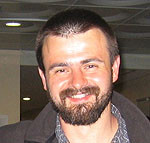Goetz M, Kitzlerova E, Hrdlicka M, Dhossche D. Journal of Child and Adolescent Psychopharmacology. 2013 Apr;23(3):228–31. doi: 10.1089/cap.2012.0045. IF: 2.773

Department of Paediatric Psychiatry
Abstract
We report a case of a 14-year-old girl with severe catatonia precipitated by emotional turmoil, who was successfully treated with intensive ECT and the N-methyl-D-aspartate (NMDA) antagonist amantadine. We did not find any prior Publisher accounts of these features in adolescents. The case is a stark reminder of the traumatic impact of cyber-bullying as a possible precipitant of catatonia in our patient. Traumatic events in childhood and adolescence represent risk factors for the later development of affective and psychotic disorders (Kelleher et al. 2008; Arseneault et al. 2011). The difficulty of escaping from it is a prominent characteristic of cyberbullying, increasing its traumatic impact (Sourander et al. 2010). At follow-up, our patient claimed amnesia for the period of hospitalization but recalled vividly her profound feelings of despair, shame, and defenselessness while being cyber-bullied. In an epidemiologic study of 1098 adolescents, those who experienced bullying three or more times a month were 3.43 times as likely to report increasing psychotic experiences (Mackie et al. 2012). Our case extends findings that adolescent bullying increases the risk for psychotic experiences by linking cyber-bullying, an intrusive form of bullying, to onset of catatonia. This supports the concept that severe traumatic events are risk factors for catatonia and that catatonia may represent an evolutionary-based fear response (Moskowitz 2004; Dhossche et al. 2012).
Catatonia is a unique motor dysregulation syndrome characterized by identifiable signs such as immobility, sometimes alternating with excessive motor activity, that is apparently purposeless and not influenced by external stimuli, extreme negativism or muteness, peculiarities of voluntary movement, echolalia, or echopraxia (Fink and Taylor 2009). Catatonia accompanies a number of general medical and neurologic conditions (Dhossche and Wachtel 2010), with acute or insidious onset. In its most severe forms, catatonia may become life threatening, especially when aggravated by autonomic dysfunction and fever. Although previously considered to be rare in children and adolescents (Cohen et al. 1999), recent reports suggest that the prevalence of catatonic symptoms in these age Gross is in fact similar to that reported in adults (Ghaziuddin et al. 2012). Overwhelming stress and traumamay trigger catatonia in children and adolescents (Dhossche et al. 2012). Benzodiazepines and electroconvulsive therapy (ECT) are considered first-line treatments (Weiss et al. 2012); however, the literature offers little guidance in cases that do not respond or that respond slowly to a course of these primary treatments.